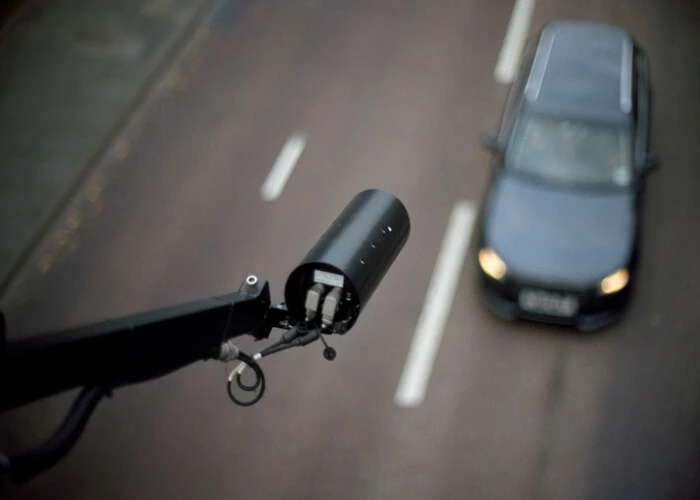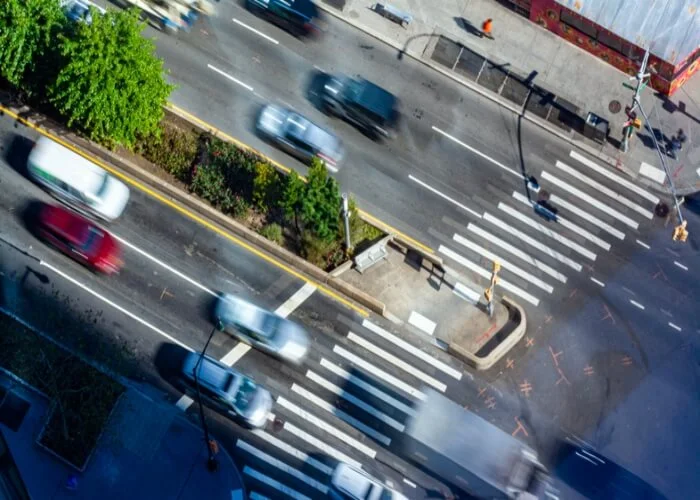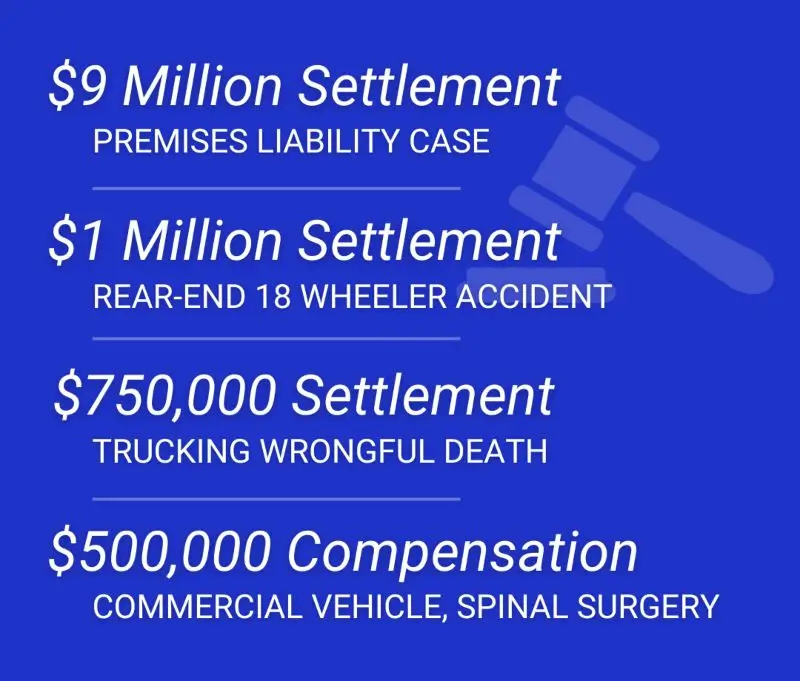
Understanding Traffic Cameras in Houston, TX
Traffic cameras are everywhere, from bustling intersections to quiet residential streets. They play a vital role in maintaining safety on the road, reducing accidents, and even solving crimes. But how much do we know about these cameras? Do they record footage? What can they pick up, and what happens if you need access to that footage? This blog dives deep into how traffic cameras work, what they capture, and how you can use their footage to your advantage, especially if you’ve been in an accident. Plus, we’ll introduce some ideas on additional evidence and explain how hiring a legal professional, like the Nava Law Group based in Houston, TX, can help you get the answers and support you need.
Do Traffic Cameras Record Footage?
Traffic cameras are common at intersections and busy roadways, but their functionality can vary greatly. Some are designed solely to monitor traffic flow and adjust signals, while others are equipped to record footage for law enforcement or accident investigations. The presence of cameras often raises questions from drivers about what exactly these devices can capture and how the footage might be used. Understanding the role and capabilities of traffic cameras is essential, especially when dealing with incidents on the road. Traffic cameras generally fall into two categories:
- Monitoring Cameras: These cameras provide live feeds to monitor traffic flow, and they are typically managed by local transportation departments. While these cameras can’t usually record, they are instrumental in monitoring congestion and optimizing traffic signals.
- Enforcement Cameras: These cameras often capture traffic violations such as speeding or running red lights. Unlike monitoring cameras, enforcement cameras are likelier to record footage and take snapshots of vehicles involved in infractions.
What Might Traffic Cameras Not Pick Up?
Traffic light cameras play an important role in maintaining road safety and monitoring traffic activity, but their capabilities are not without limits. These cameras are often positioned at fixed locations, which means they can only capture events occurring within their field of view. Adverse weather conditions such as heavy rain, fog, or snow can also obscure the camera’s vision, reducing the clarity of recorded footage. Furthermore, technical issues like low resolution or equipment malfunction may hinder their performance in key moments. While traffic cameras are powerful tools, they’re not all-seeing. There are various scenarios where cameras might miss crucial details, including the following:
- Blind Spots: Cameras may not capture everything that happens outside their fixed range of vision.
- Low Visibility: Conditions like heavy rain, fog, or night can reduce camera clarity.
- Objects Blocking the Camera: Trees, poles, or large vehicles might obstruct the view.
- No Camera Present: Not all intersections or streets feature traffic cameras.
If Someone Else Is Driving My Vehicle, Who Is at Fault for an Accident?
When lending your vehicle to someone else, it is crucial to understand how liability might be determined in the event of an accident. The driver’s actions, driving record, and whether they had permission to use your car can all influence the outcome. Additionally, insurance coverage plays a significant role, as some policies may extend to the driver while others may not. Understanding these nuances can help avoid potential misunderstandings or complications. Consulting a specialized legal team like Nava Law Group can help clarify these issues, especially after an accident. Generally, these are the following factors considered:
- Driver Responsibility: If drivers are permitted to use the vehicle, they are typically held responsible for their actions.
- Owner’s Insurance: An owner’s car insurance policy typically covers damage caused by their vehicle, regardless of who was driving. However, this depends on the policy specifics.
Other factors to consider include:
- Was the driver acting recklessly or negligently?
- Were they using the vehicle for unauthorized purposes?
- Was the car insured or uninsured?
How Can I Retrieve Footage from My Accident?
Retrieving footage from a traffic camera can be vital in proving liability or understanding the sequence of events in an accident. This video evidence can provide an unbiased record of what transpired, which is especially helpful when eyewitness accounts are unavailable or conflicting. Acting quickly is essential, as many traffic cameras overwrite recordings after a short period due to limited storage capacity. If traffic camera footage is crucial for your case, here are steps you can take to retrieve it:
- Contact Local Authorities: Contact the city’s transportation or police department, as they may control the specific traffic camera.
- Submit a Public Records Request: Depending on local laws, you may need to file a formal request to access the footage.
- Act Quickly: Traffic camera footage is often stored for a limited time, from days to weeks. Time is critical.
- Hire a Lawyer: A legal professional can expedite the process and examine all possible avenues for obtaining the footage.
How Long Does Footage Stay Recorded on a Traffic Camera?
The length of time traffic camera footage is retained often depends on the organization’s policies managing the cameras. While some enforcement cameras retain footage for 30 days or more, monitoring cameras may only store footage for a few days—or not at all. Act immediately if you believe the footage is vital for your claim or case. Delays could result in the footage being overwritten or permanently deleted, making it inaccessible. Contacting the managing agency directly to understand their specific retention policies is also helpful. Being proactive in your efforts can make all the difference in securing the evidence you need.
Are All Intersections Equipped with Cameras?
While many intersections do have cameras, their installation is far from universal. The presence of cameras often depends on local government policies, funding availability, and specific monitoring needs within a community. Additionally, technological advancements and urban planning priorities significantly determine which intersections are equipped with cameras. Understanding the criteria for camera placement can provide insight into their distribution and coverage in different locations. Some common areas where cameras are more likely include the following:
- Intersections with historically high accident rates
- Traffic-heavy zones
- Areas prone to speeding violations or running red lights

What Additional Forms of Evidence Can I Use Outside of Cameras?
Traffic cameras are essential for documenting incidents, but they are not always present at every crucial location. Additionally, technical issues or obstructed views can render their footage incomplete or unusable. When faced with such circumstances, exploring other methods to establish what occurred during a particular event becomes essential. By leveraging multiple sources of evidence, you can create a more comprehensive account of the situation. If traffic camera footage isn’t available or sufficient, you can turn to alternative forms of evidence to support your case:
- Dashcam Footage: Personal dashcams provide firsthand video evidence.
- Eyewitness Accounts: Statements from witnesses can corroborate claims.
- Photos from the Scene: Pictures of damage, road conditions, and vehicle positions can be powerful evidence.
- Police Reports: Official documentation from law enforcement can provide an independent evaluation of the incident.
- Black Box Data: Some modern vehicles record crucial data, such as speed and braking moments before a crash.
Know the Benefits of Hiring a Lawyer
Dealing with the aftermath of a traffic accident can feel overwhelming, especially when trying to understand your rights and gather the necessary evidence to support your case. Insurance companies often have teams of professionals working to minimize payouts, making it even more challenging to ensure fair compensation. Without proper guidance, you could miss out on damages you are entitled to receive. This is where professional legal assistance becomes invaluable. Navigating traffic accident claims can be confusing and stressful. A personal injury or traffic law attorney can:
- Gather crucial evidence, like camera footage
- Interpret traffic and negligence laws
- Negotiate with insurance companies
- Represent you in court, if necessary
Answering Your Frequently Asked Questions
When you’re involved in a traffic accident, it’s natural to have many questions about what to do next. From understanding your rights to navigating insurance claims and legal processes, it can feel overwhelming. We’ve compiled answers to some of the most common questions to help guide you through this challenging time and ensure you’re prepared to take the proper steps.
What is negligence?
Negligence occurs when someone fails to exercise the level of care expected in a given situation, leading to harm or injury. This concept is central to many personal injury and liability cases, as it establishes whether a party acted irresponsibly or carelessly. Proving negligence typically involves demonstrating that a duty of care was owed, that this duty was breached, and that the breach directly caused damages. Without evidence of negligence, it can be challenging to hold someone legally accountable for the harm caused.
Do I really need a lawyer?
While not mandatory, hiring a lawyer significantly increases your chances of securing rightful compensation and successfully navigating the legal complexities.
What are the most common causes of accidents?
Understanding the most common causes of accidents can help raise awareness and potentially prevent future incidents. Many accidents occur due to avoidable behaviors or external factors that impact safety on the road. Below are some of the leading causes of accidents to consider:
- Distracted driving
- Speeding
- Driving under the influence
- Reckless driving
- Weather conditions
Who determines fault in an accident?
Fault is usually determined based on evidence such as police reports, witness statements, and camera footage. Insurance adjusters and legal professionals often play a role in this process. Additionally, factors like traffic laws, road conditions, and the behavior of drivers involved are thoroughly analyzed to establish responsibility. Gathering and preserving strong evidence can significantly impact the outcome of claims and legal proceedings. Ultimately, determining fault is a crucial step in ensuring accountability and securing fair compensation for those affected.
Consider Hiring Nava Law Group for Your Needs
Life can change in an instant, often without warning. Unexpected events, like accidents, can leave individuals overwhelmed and uncertain about their next steps. Navigating the challenges that follow can be daunting, especially when dealing with physical, emotional, and financial hardships. Accidents can be life-changing, but you don’t have to face the aftermath alone. The Nava Law Group offers the following:
- Personalized legal strategies for traffic accidents
- Expertise in evidence collection, including camera footage
- Assistance navigating insurance claims and legal proceedings
Protect Your Rights with Nava Law Group
Whether or not traffic cameras recorded your accident, gathering evidence and building a solid case is crucial. Understanding how traffic cameras work and knowing your rights is just the beginning. Hiring an experienced legal team like Nava Law Group is the best way to ensure your case is handled professionally and effectively. Our team can identify key evidence, including witness testimonies and footage from nearby businesses or private cameras, to strengthen your claim. Additionally, we work diligently to ensure all legal deadlines are met, and your rights are fully protected throughout the process. With our expertise, you can focus on recovery while they handle the complexities of your case.
Trust Us for Assistance Today
At Nava Law Group, your well-being and justice are our top priorities. We are committed to providing compassionate support and relentless advocacy to achieve the best possible outcome for your case. Contact us today for a consultation and take the first step toward securing the justice and compensation you deserve. Together, we will fight for your rights and clarify your situation when you need it most.








